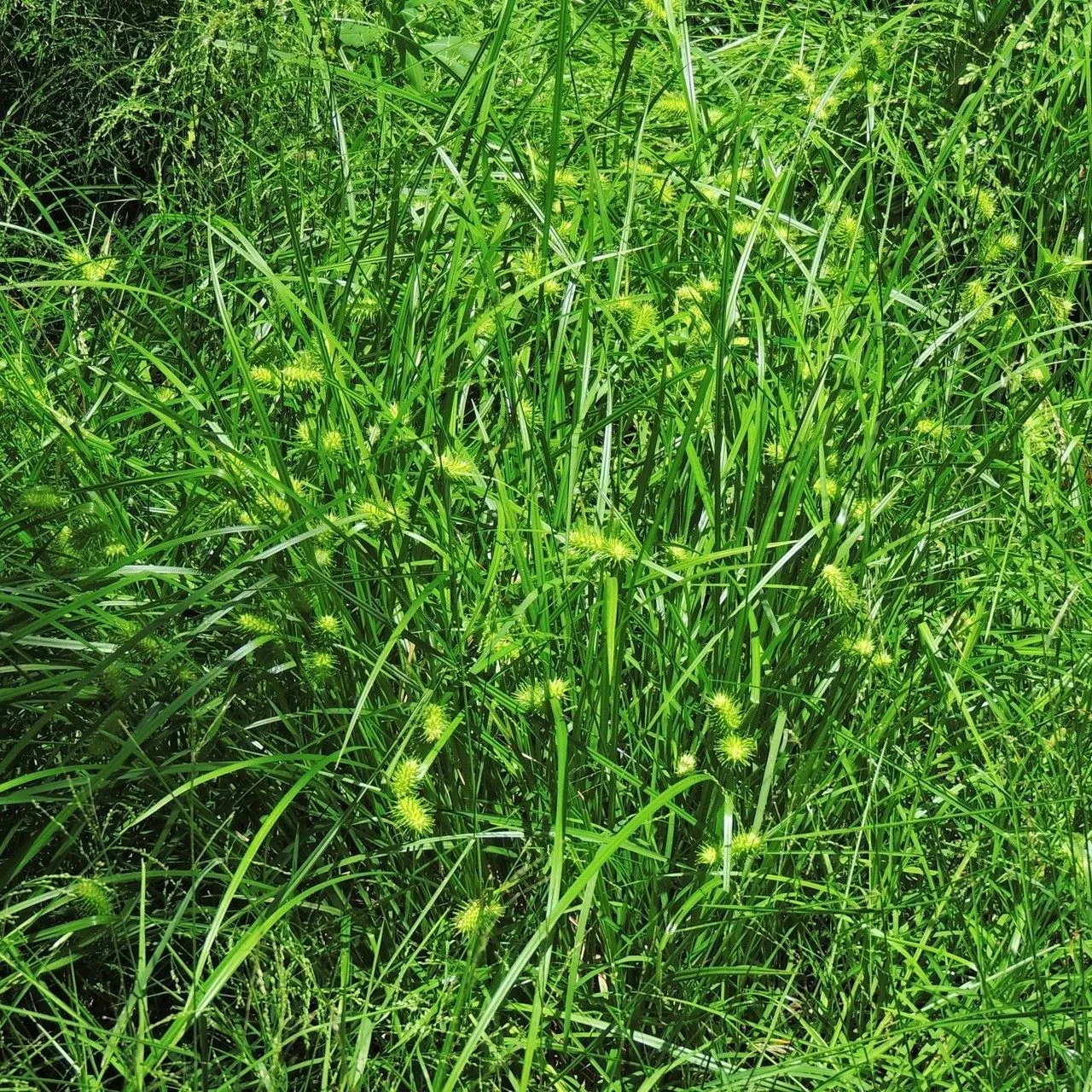
Author: Wahlenb.
Bibliography: Kongl. Vetensk. Acad. Nya Handl. 24: 153 (1803)
Year: 1803
Status: accepted
Rank: species
Genus: Carex
Vegetable: False
Observations: E. Canada to Ecuador
Shallow sedge, known scientifically as Carex lurida, is a notable member of the Cyperaceae family. Described by the botanist Wahlenberg in 1803, this plant has a wide geographical distribution, spanning from Eastern Canada all the way down to Ecuador.
Carex lurida is often found in moist, shallow environments, which is reflective of its common name. This perennial sedge is characterized by its robust, tufted appearance and bright green, grass-like leaves. Typically, it thrives in wet habitats such as marshes, wet meadows, and along the edges of ponds and streams, where it plays a crucial role in the local ecosystem by providing habitat and food for various wildlife species.
The plant’s distinguishing features include its dense flower spikes, which are formed of numerous small, yellow-brown spikelets. These are not only aesthetically pleasing but also serve an ecological function by facilitating the reproduction of the plant through seed dispersal.
Given its extensive range, from the cooler climates of Eastern Canada to the tropical regions of Ecuador, Carex lurida demonstrates a remarkable adaptability to different environmental conditions. This adaptability makes it a resilient species, capable of surviving and proliferating in diverse ecological zones.
Ecologists and botanists often study Shallow sedge to better understand wetland ecosystems and the role such plants play in maintaining the health and stability of these environments. The plant’s presence is a strong indicator of the environmental quality of its habitat, making it a valuable species for ecological monitoring and conservation efforts.
In summary, Carex lurida or Shallow sedge is a versatile and ecologically significant plant noted for its widespread distribution and its contribution to wetland ecosystems. Its study offers insights into the health of wetland habitats and highlights the importance of conserving these vital environments.
Eng: shallow sedge, sallow sedge, bottlebrush sedge
Fra: carex luisant
Swe: träskstarr
En: Shallow sedge, Sallow sedge, Bottlebrush sedge
Fi: Kimmelsara
Fr: Carex luisant
Sv: Träskstarr
Taken Jul 8, 2022 by William Coville (cc-by-sa)
Taken Jul 19, 2022 by William Coville (cc-by-sa)
Taken Jul 13, 2021 by Charly Charly Bloom (cc-by-sa)
Taken Jun 21, 2022 by suzan oconnor (cc-by-sa)
Taken Jun 2, 2020 by jude s (cc-by-sa)
Taken Jun 2, 2022 by Otto (cc-by-sa)
Taken Jun 11, 2022 by Cara Foster Karim (cc-by-sa)
Taken May 3, 2019 by ravenssong33 (cc-by-sa)
Taken May 14, 2022 by Casey Smith (cc-by-sa)
Taken Nov 7, 2022 by Victoria Hill (cc-by-sa)
Taken Jan 12, 2015 by EOL − Mike Lusk (cc-by-nc)
Taken Jul 22, 2013 by EOL − Erin Faulkner (cc-by-nc)
Taken Jun 24, 2014 by EOL − Robert L Curtis (cc-by-nc-sa)
Taken Jul 13, 2015 by EOL − camelcreek (cc-by-nc)
Taken Jan 1, 1900 by EOL − Smithsonian Institution, National Museum of Natural History, Department of Botany (cc-by-nc-sa)
Taken Jun 24, 2014 by EOL − Robert L Curtis (cc-by-nc-sa)
Taken Jun 17, 2014 by EOL − Christopher Tracey (cc-by-nc-sa)
Taken Jul 13, 2015 by EOL − camelcreek (cc-by-nc)
Taken Aug 29, 2015 by EOL − ohardy (cc-by-nc)
Taken Jan 1, 1900 by EOL − Carol Kelloff (cc-by-nc-sa)
Taken Oct 3, 2019 by Melissa Melissa Keneely (cc-by-sa)
Taken Oct 28, 2019 by Melissa Melissa Keneely (cc-by-sa)
Growth form: Bunch
Growth habit: Graminoid
Growth rate: Moderate
Ph maximum: 6.8
Ph minimum: 4.9
Family: Myrtaceae Author: (F.Muell.) K.D.Hill & L.A.S.Johnson Bibliography: Telopea 6: 402 (1995) Year: 1995 Status:…
Family: Rubiaceae Author: Pierre ex A.Froehner Bibliography: Notizbl. Bot. Gart. Berlin-Dahlem 1: 237 (1897) Year:…
Family: Sapindaceae Author: Koidz. Bibliography: J. Coll. Sci. Imp. Univ. Tokyo 32(1): 38 (1911) Year:…
Family: Asteraceae Author: A.Gray Bibliography: Pacif. Railr. Rep.: 107 (1857) Year: 1857 Status: accepted Rank:…
Family: Fabaceae Author: Medik. Bibliography: Vorles. Churpfälz. Phys.-Ökon. Ges. 2: 398 (1787) Year: 1787 Status:…
Family: Aspleniaceae Author: (Cav.) Alston Bibliography: Bull. Misc. Inform. Kew 1932: 309 (1932) Year: 1932…